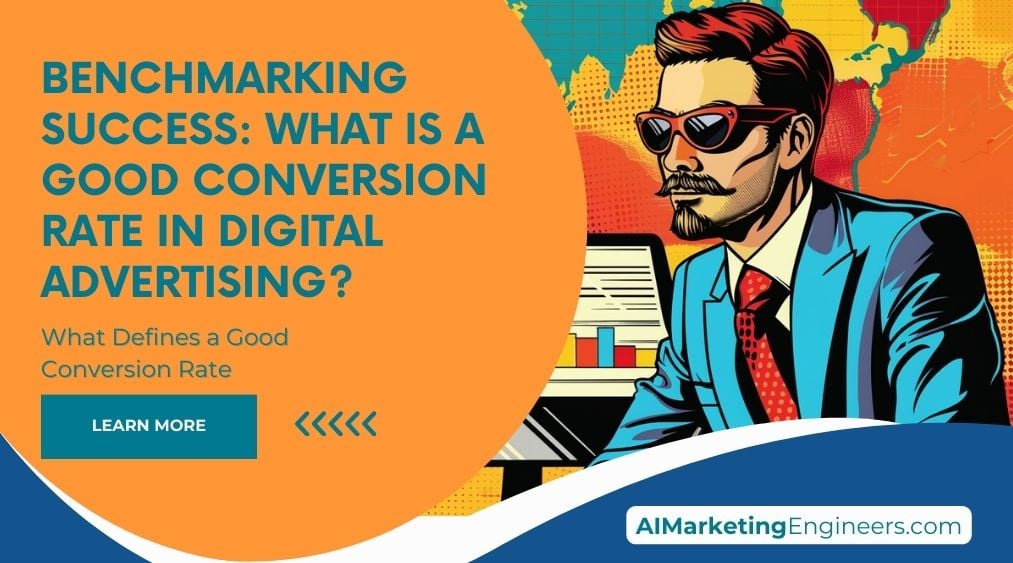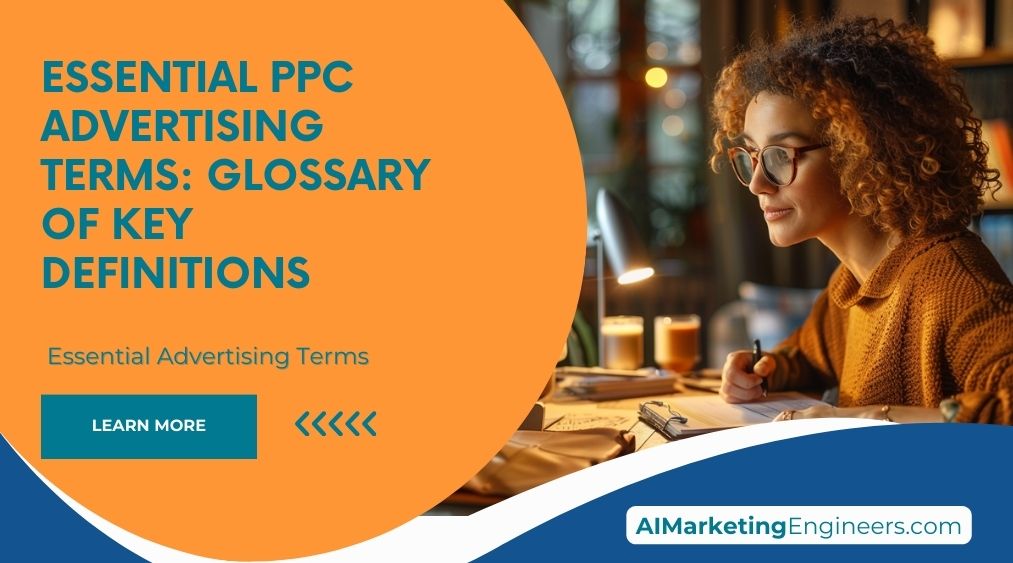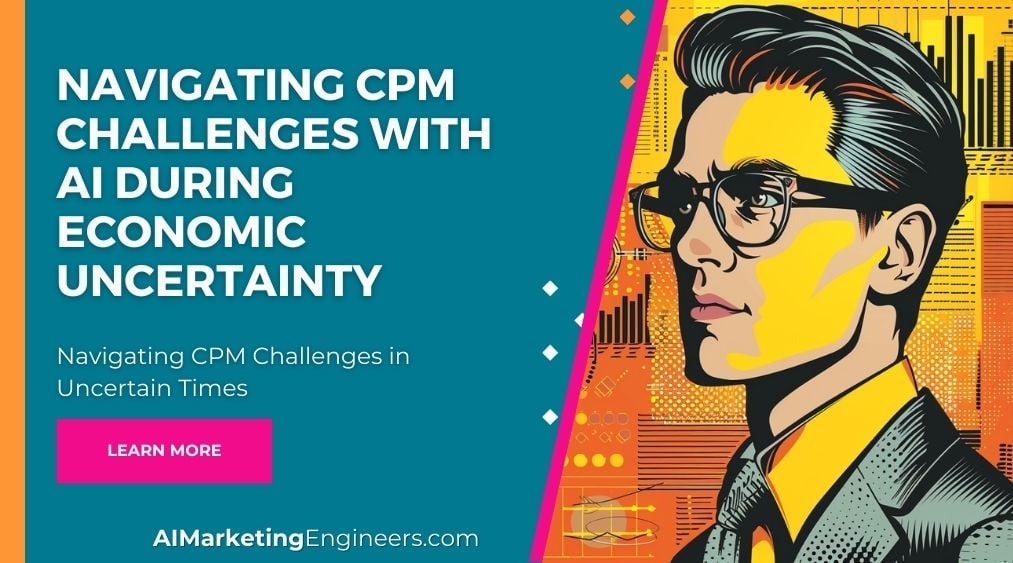Key Takeaways
✅ Defining a Good Conversion Rate: While the sweet spot for conversion rates can hover between 2%-5%, remember this number can shift drastically depending on your field. Picture this: 100 digital window-shoppers on your site. Now imagine 2 to 5 of them actually clicking the 'buy' button – that's your benchmark for digital success.
✅ Factors Influencing Conversion Rates: Ever wonder why some websites seem to rake in the revenue? Well, a heap can come into play – site design that catches the eye, a user experience that’s smoother than butter, and of course, having something worth buying. These pieces of the puzzle directly affect how many visitors transform into buyers.
✅ Benchmarking Success: To really know if your digital ads are hitting the mark, you've got to keep score. Tracking your conversion rate over time lets you play detective – what's working, what's not, and how do you stack up against the competition? No need to follow the crowd, tailor those benchmarks to your unique business and audience.
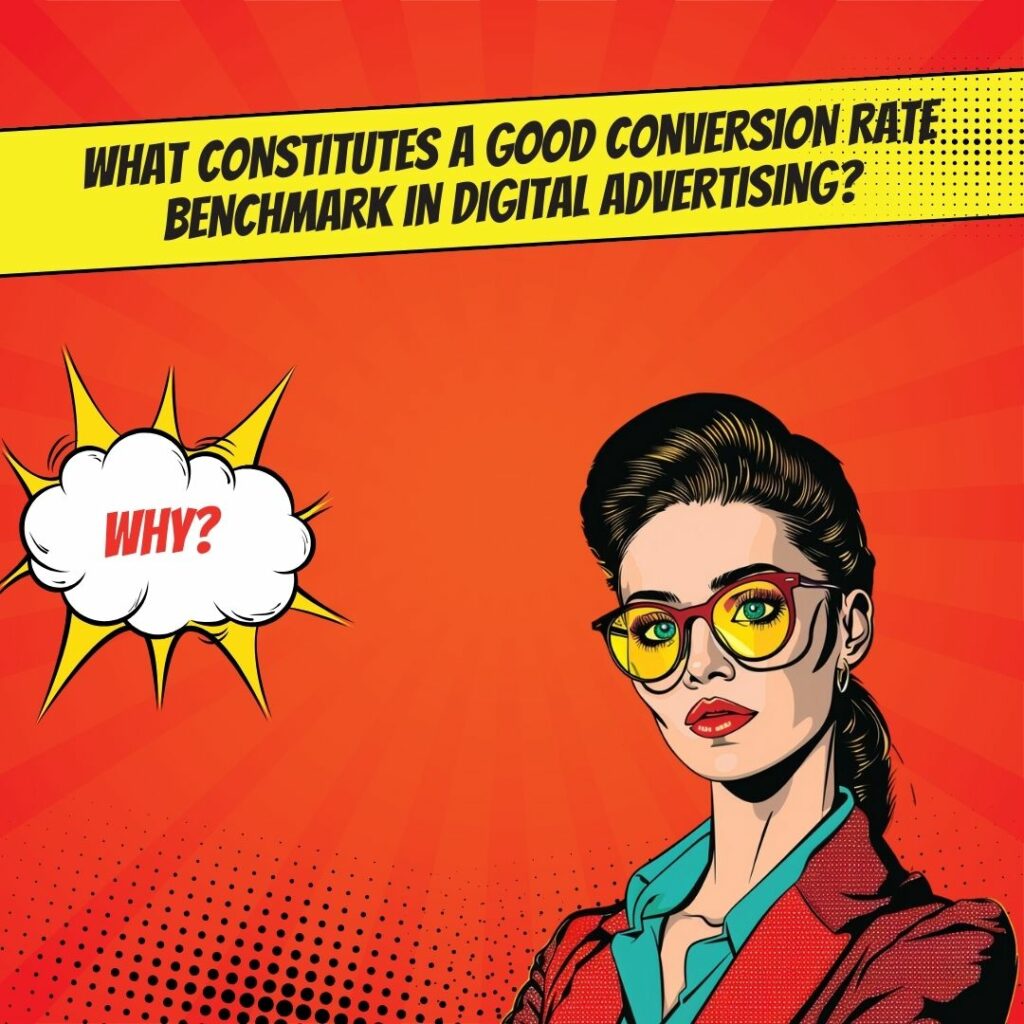
Introduction
Ever found yourself puzzling over why some ads seem to turn procrastinating browsers into eager buyers, while others flounder? At the heart of this mystery lies a crucial metric: the conversion rate. Getting to grips with this can mean the difference between a fizzling campaign and one that really pops.
Let's pull back the curtain and shed some light on benchmarking success in digital advertising. From understanding the variables that can make or break your stats, to taking a peek at the industry yardsticks, and weaving through the labyrinth of enhancing those all-important numbers. What if I told you that with a few smart tweaks, you could boost not just your conversion rate, but your revenue, return on ad spend (ROAS), and overall return on investment (ROI)? Stick around – by the end of this, you'll be wielding the tools to do just that!
Top Statistics
| Statistic | Insight |
|---|---|
| Average Conversion Rate for Google Ads: 3.75% across all industries. (Source: WordStream, 2021) | It’s a starting point to measure your campaigns against a broad industry benchmark. |
| Highest Conversion Rates by Age Group: Users aged 45-54 years old show an average of 5.94%. (Source: Statista, 2020) | This age group possibly possesses more spending power and could be prime targets for campaigns. |
| Conversion Rate for Facebook Ads: Averages at 9.21%. (Source: Hootsuite, 2021) | Facebook’s platform remains a gold mine for advertisers, with striking opportunities to convert. |
| SEO Organic Search Conversion: Top three results average a 5.59% conversion rate. (Source: Backlinko, 2021) | Landing at the top of search results can significantly increase your chances of a conversion. |
| Landing Page Optimization: Top 25% of landing pages have an 11.45% conversion rate. (Source: Unbounce, 2021) | A compelling landing page can do wonders, pushing your conversion rates above the average. |

Understanding Conversion Rates in Marketing
Do you ever wonder what makes a digital ad campaign truly successful? It's not just about how many people click your ad—it's about how many take that next crucial step. That step, folks, is what we call a conversion. Whether it's buying a product, signing up for a newsletter, or downloading an e-book, a conversion is the goal behind the ad. And the conversion rate? Well, that's the magic number that tells us what percentage of people who clicked on the ad did what it asked them to.
Factors Affecting Conversion Rates
Have you ever landed on a website and clicked away in frustration because it took ages to load? You're not alone. Website design and user experience are huge in the world of conversions. The journey from click to action needs to be as smooth as peanut butter. Also, no matter how flashy your ads are, if what you're selling isn't cutting the mustard, people won't bite. The quality of products or services is non-negotiable. And let's not forget the backbone of digital ads — the right advertising channels and targeting strategies lead to better reach and engagement. Lastly, the message on your landing pages has to resonate and encourage that final click.
Industry Benchmarks for Conversion Rates
Ever feel like you're shooting in the dark when setting goals for your ad campaigns? Industry benchmarks shine a light on the average conversion rates to chase after. These numbers vary—what's good for an e-commerce site might be different for a B2B service. Knowing these averages helps you set realistic goals and understand whether you're on track to advertising glory or if you need to up your game.
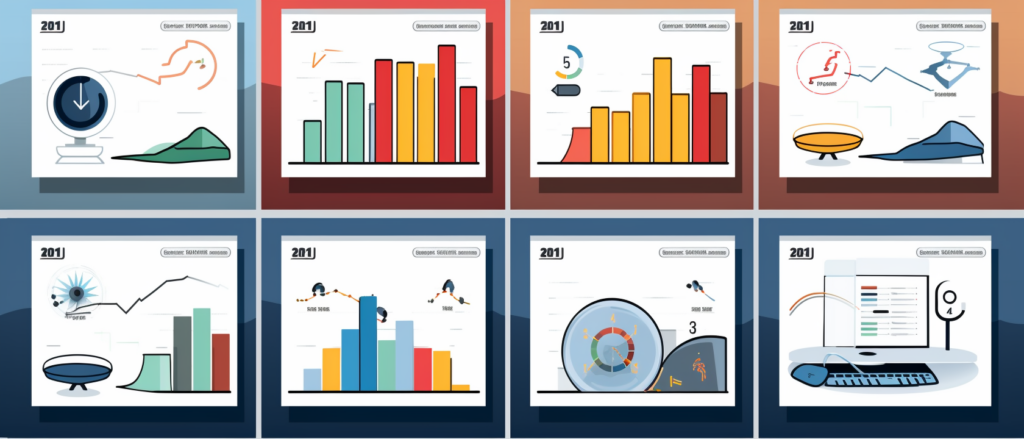
How to Improve Conversion Rates
Now, if your conversion rate isn't looking too hot, don't sweat—it can be boosted. How? Begin with optimizing your landing pages; make them user-friendly and enticing. Test out different approaches with A/B testing; sometimes, a simple change in color or text can lead to more conversions. Keeping up with personalization and targeting strategies also makes your audience feel special, upping the chances they'll convert. And never underestimate the need for speedy website loading times and slick performance on mobile devices.
Measuring and Analyzing Conversion Rates
To keep your conversions on the rise, you need to track 'em. Tools like Google Analytics are like a Swiss Army knife for monitoring how your ads perform. With proper conversion goals set up, you can keep an eye on the health of your campaigns. And when you dig into that data, it's like a treasure map showing you where to focus your efforts for continuous improvement.
The Role of Conversion Rates in Marketing Strategies
Conversion rates and ROI are cozy bedfellows in the digital marketing world. Knowing your conversion rates helps you decide where to put your money and effort for the best return. Plus, this knowledge lets you tweak your strategies for maximum impact. But it's a balancing act; while conversion rates are key, remember to pay attention to other key performance indicators. It's about seeing the whole picture and making informed moves.
In the story of your marketing journey, conversion rates are a character that can determine whether your tale is one of triumph or tribulation. Monitor them, understand them, and continually seek ways to improve them. It's those numbers that let you write a success story that every marketer dreams of.

AI Marketing Engineers Recommendation
Recommendation 1: Understand Your Industry Average, Then Aim Higher: Before setting your sights on a conversion rate, have a good hard look at the average for your industry. Do you know what the normal range is for businesses like yours? Once you've got that number, don't just sit there and nod – set a goal to do better. Data from a credible source, like WordStream or HubSpot, can serve as a handy starting line, but the real race is beating that average. Use that knowledge to tweak and finetune your ads and landing pages, so they're not just average – they're remarkable.
Recommendation 2: Segment Your Traffic for Precision Tuning: Now, let's talk strategy. Not every visitor to your site is coming from the same place or looking for the same thing, right? So, here's what the savvy marketers are doing: they're splitting their traffic into segments – organic, paid, email, social, you name it. By understanding the conversion rates for different traffic sources, you can decide where to focus your efforts. Maybe your email traffic converts like hotcakes, but your social media traffic… not so much. Time to stir up your social strategy, perhaps?
Recommendation 3: Use A/B Testing to Make Data-Driven Decisions: And how about we get practical? Imagine you've got two versions of a web page, each whispering sweet nothings to your potential customers. Ever wondered which one is really charming them? A/B testing is like a dating game for your web pages: send half your visitors to version A, the other half to version B, and see which one gets more phone numbers – or in our world, conversions. Tools like Google Optimize or Optimizely can set up this showdown, so you aren't just guessing about what works – you're relying on cold, hard data.
Relevant Links
- Skyrocket Your Sales with a Focused SEO Strategy
- Unlock the Power of Personalization and AI in Marketing
- Lead Magnets and Landing Pages: Convert Clicks Into Customers!
- Essential Analytics Tools Every Marketer Should Know
- Future-Proof Your Marketing with These Digital Trends
Conclusion
Conversion rates are a bit like the heartbeat of your digital advertising efforts, aren't they? Through our journey together in this article, we've really gotten to the heart of why these numbers are so much more than just percentages. They offer a glimpse into the effectiveness of your online storefront, your advertising prowess, and your ability to connect with folks who are interested in what you've got to offer.
But here's the thing: what matters isn't the conversion rate alone—it's what you do with that information. Are you comparing apples to apples by looking at industry benchmarks? Are you giving your website the love it needs with easy navigation and an enjoyable user experience? Maybe you're at the point of fine-tuning with A/B testing or making sure your site loads faster than someone flipping through a magazine.
If you remember one thing, let it be this: Conversion rates are your clues to success. They tell stories—stories of victories, tales of where there's room to grow. And isn't that what we're all looking for? A way to connect better, reach further, and entice folks into saying 'yes' to what we're proposing.
So, what's your next chapter? Maybe it's tweaking that landing page or trying out a new ad channel. Or perhaps, it's time to get friendly with an analytics tool and start making those numbers talk, really talk, about the changes you need to make. Either way, your journey with conversion rates is just beginning, and the path to marketing success is paved with the insights they provide. Keep monitoring, keep analyzing, and most importantly, keep learning from the people behind the clicks. What will your data tell you next?

FAQs
Question 1: What is a conversion rate in marketing?
Answer: Conversion rate in marketing is all about how many folks out there actually go through with what you want them to do. Think of it like inviting guests to your party – if they RSVP and show up, that's a conversion.
Question 2: Why is a good conversion rate important in digital advertising?
Answer: Think of a good conversion rate as a thumbs-up for your digital ad skills. It means you're not just throwing darts in the dark; you're hitting the bullseye by getting people to do what you want, and that keeps the lights on.
Question 3: What is considered a good conversion rate in digital advertising?
Answer: What's a good conversion rate, you ask? Well, it's like grades in school – 2-5% is average, and over 5%? You're top of the class. But hey, don't just compare yourself to everyone; make sure you're keeping up with the Joneses in your own industry.
Question 4: How can I improve my conversion rate in digital advertising?
Answer: If you want people to come to your party (aka convert), you've got to make it inviting. Polish up your website, make your content as tempting as pie, sweeten the deal with offers, and keep tweaking until you get it just right.
Question 5: What are some common factors that affect conversion rates?
Answer: Conversion rates can be as fickle as the weather—site design, content relevance, how amazing your offer is, and if you're catching the right eyes. It's about knowing your crowd and playing the right tunes.
Question 6: How can I track and measure my conversion rate?
Answer: Keeping track of who's digging your digital ads is like counting party-goers. Tools like Google Analytics are your bouncer at the door, helping you see who's coming in and what moves they're making.
Question 7: What is A/B testing, and how can it help improve conversion rates?
Answer: A/B testing is like asking folks, "Do you like pizza or burgers at parties?" You try two flavors and see which one gets the crowd going. Then, you know what to serve up for better conversions.
Question 8: How do I benchmark my conversion rates against my industry and competitors?
Answer: To see if your party is the talk of the town, snoop around to see how the others are doing. Check out industry chatter, peek at the competition, and use fancy tools to see how your bash compares.
Question 9: What is a sales funnel, and how does it relate to conversion rates?
Answer: A sales funnel is like the path to your party – it's how you guide people from just knowing about it to showing up and having a blast. Fine-tuning that journey means more happy guests and better conversions.
Question 10: What are some advanced strategies for improving conversion rates in digital advertising?
Answer: Want to be the host with the most? Try personal touches, reminders to folks who left early (retargeting), showing off your popular guests (social proof), making sure your party is mobile-friendly, and letting your guests do the talking with their own content.

Academic References
- Al-Azzam, O., & Al-Shawabkeh, R. (2018). A Review of Conversion Rate Optimization: Importance, Process, and Practices. International Journal of Engineering and Information Systems, 2(10), 20-28. This article delves into the critical nature of conversion rate optimization and explores the various processes and best practices involved. The authors note that while ideal conversion rates can vary widely depending on the industry and individual business objectives, rates between 2% and 5% are typically viewed as satisfactory.
- Econsultancy. (2019). Digital Marketing Performance Benchmarks and Trends. This report, stemming from a survey covering over a thousand digital marketers, offers a glimpse at conversion rate benchmarks across numerous industries. It was observed that the average conversion rate for online retail sites stands at 3.52%, with the more successful businesses achieving rates upwards of 5.31%. Emphasized within are the roles of A/B testing and personalization in refining conversion rates.
- Ameen, N. K., Grant, P. C., & Edgar, D. (2017). The Impact of Marketing Contact Frequency on Conversion Rates. Journal of Marketing Theory and Practice, 25(3), 319-333. Investigating the dynamic between how often marketers reach out to potential customers and the resultant conversion rates, this study uncovers that while more frequent contact can improve conversion rates up to a point, there exists a threshold beyond which the effectiveness of such contact starts to wane. The authors stress the importance of finding a balance in contact frequency.
